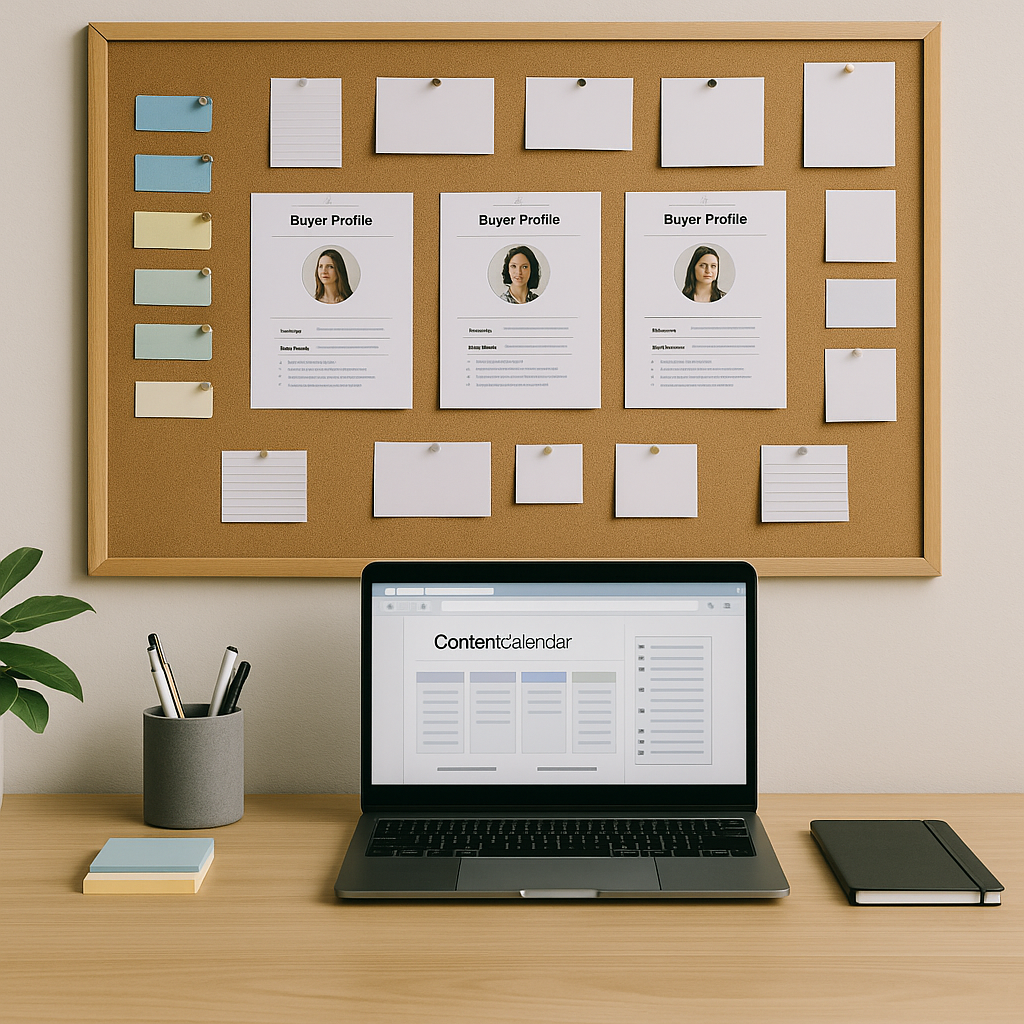Your cart is currently empty!

How do I align content with buyer personas?
•
What is a Buyer Persona?
A buyer persona is a semi-fictional representation of your ideal customer based on market research, real data about your existing customers, and educated assumptions. It includes demographic information, behavior patterns, motivations, goals, and challenges. Buyer personas help businesses understand and empathize with their audience, enabling more targeted and effective marketing strategies.
Think of a buyer persona as a detailed character sketch. Instead of saying ‘we’re targeting small business owners,’ you say ‘we’re targeting Sarah, a 38-year-old owner of a boutique marketing agency who struggles with lead generation and values automation tools.’
Why Aligning Content with Buyer Personas Matters
Creating content without a clear understanding of your audience is like throwing darts in the dark. Aligning content with buyer personas ensures that your messaging resonates with the right people, at the right time, through the right channels. This alignment leads to:
- Higher engagement rates
- Improved lead quality
- Better SEO performance
- Increased conversions
- Stronger brand loyalty
When your content speaks directly to your audience’s needs, pain points, and aspirations, it builds trust and drives action.
Steps to Align Content with Buyer Personas
1. Develop Detailed Buyer Personas
Start by gathering data from customer interviews, surveys, CRM analytics, and social media insights. Identify patterns in demographics, job roles, goals, challenges, and preferred content formats. Create 2–3 primary personas to focus your content strategy.
Include the following in each persona:
- Name and job title
- Demographics (age, gender, location)
- Goals and motivations
- Challenges and pain points
- Preferred communication channels
- Buying behavior and decision-making process
2. Map the Buyer’s Journey
Each persona goes through a journey before making a purchase. This journey typically includes three stages:
- Awareness: The buyer realizes they have a problem.
- Consideration: They research solutions.
- Decision: They choose a product or service.
Create content tailored to each stage. For example, blog posts and infographics work well in the awareness stage, while case studies and product comparisons are ideal for the decision stage.
3. Audit Existing Content
Review your current content library and categorize each piece by persona and buyer journey stage. Identify gaps where content is missing or misaligned. Use this audit to repurpose, update, or retire content that doesn’t serve your personas.
4. Create Persona-Driven Content
Now that you know who you’re targeting and what they need at each stage, start creating content that speaks directly to them. Use the persona’s language, tone, and preferred formats. For example, if one persona prefers video tutorials, prioritize that format over long-form text.
Types of content to consider:
- How-to guides
- Whitepapers and eBooks
- Webinars and live demos
- Case studies and testimonials
- Email campaigns and newsletters
5. Personalize Your Messaging
Use dynamic content and segmentation to tailor your messaging. Email marketing platforms and CMS tools allow you to serve different content based on user behavior, location, or persona attributes. This level of personalization increases relevance and engagement.
6. Optimize for SEO
Incorporate long-tail keywords that your personas are likely to search for. Use natural language and address specific questions they might have. For instance, instead of targeting ‘marketing tips,’ use ‘how to generate leads for a small marketing agency.’
Also, optimize meta descriptions, headers, and image alt text to improve visibility in search engines while staying aligned with persona interests.
Common Mistakes to Avoid
- Creating too many personas: Focus on 2–3 core personas to avoid diluting your content strategy.
- Ignoring data: Personas should be based on real data, not assumptions.
- One-size-fits-all content: Avoid generic messaging that tries to appeal to everyone.
- Neglecting the buyer’s journey: Tailor content to each stage for maximum impact.
- Forgetting to update personas: Revisit and revise personas regularly as your audience evolves.
Tools to Help Align Content with Personas
Several tools can streamline the process of aligning content with buyer personas:
- HubSpot: Offers persona templates and content mapping tools.
- SEMrush: Helps identify keywords and content gaps based on persona interests.
- Google Analytics: Provides insights into user behavior and demographics.
- Surveys and Polls: Tools like Typeform or SurveyMonkey gather direct feedback from your audience.
- CRM Platforms: Track customer interactions and segment audiences for targeted messaging.
Measuring the Success of Persona-Aligned Content
To ensure your content is effectively aligned with buyer personas, track the following metrics:
- Engagement Rates: Time on page, bounce rate, and social shares indicate relevance.
- Lead Quality: Are leads more qualified and sales-ready?
- Conversion Rates: Track downloads, sign-ups, and purchases.
- SEO Performance: Monitor rankings and organic traffic for persona-specific keywords.
- Customer Feedback: Use surveys and interviews to validate content effectiveness.
Regularly review these metrics and adjust your strategy to better meet persona needs.
Final Thoughts
Aligning content with buyer personas is not a one-time task—it’s an ongoing process of understanding, testing, and refining. By putting your audience at the center of your content strategy, you create more meaningful connections, drive better results, and build a brand that truly resonates.
Whether you’re a startup or an established enterprise, taking the time to align your content with buyer personas will pay dividends in engagement, loyalty, and growth.
#ContentMarketingStrategy #BuyerPersonaAlignment #TargetedContent #DigitalMarketingTips #SEOContent
Leave a Reply